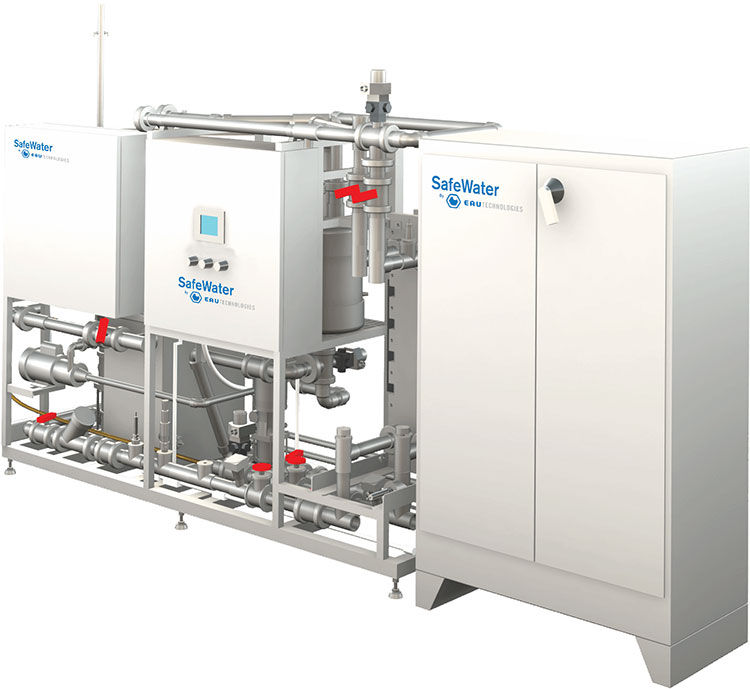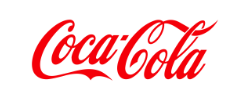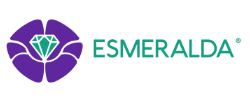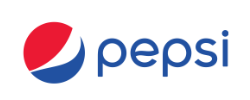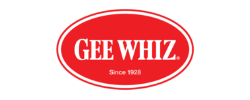Case Study – Dairy
October 5, 2015
The Safe and Efficient SafeWater™
Onsite Generation of Environmentally Friendly
CIP Cleaners and Sanitizers
Clean in place (CIP) is an important part of many food and beverage processes. The need for thorough cleaning and safe production is paramount but efficiency is also
important to ensure operational costs are minimized and plant run time maximized. In today’s markets, there is an increasing need for more frequent product changeover to meet changing and varied consumer demands. This presents increased production challenges and the time to changeover between products becomes an important criterion for operational efficiency.
EAU Technologies is the leading provider of electrolyzed water for high volume, business-to-business applications for the food and beverage markets. It supplies SafeWater™ systems, the revolutionary technology that is producing remarkable sanitation results while reducing energy consumption, cost and time for CIP processes.
Situation:
Noosa Yoghurt, a US-based dairy company, has a keen social ethic to provide a sustainable operation which, along with drivers for flexible production and reduced costs, led it to review its CIP processes. It faced the challenge of increasing their product volumes and producing an ever increasing number of flavors for difficult to clean dairy products (solid material and heat treated liquids) at its plant. These factors were combined with increased sanitization requirements as well as intensive and invasive tear-down activities to adequately evaluate interior surfaces of equipment that is routinely cleaned/sanitized using CIP systems, all of which had a significant negative impact on available production time.
Challenge:
The continued growth, increase in number of product flavors and high frequency of cleaning across the customer’s site made it imperative for the customer to look at alternatives to traditional Clean in Place methods. Frequent product changes meant a solution was required that would improve the process efficacy, lead to better operational efficiency as well as reduce environmental impact – saving energy and water, reducing potentially harmful waste streams and improving conditions and safety for plant personnel.
Solution:
EAU Technologies SafeWater’s cleaning and sanitizing fluids have been shown to maintain or improve cleaning and sanitizing effectiveness within the CIP process. The first step in this project was to go through a rigorous validation process, including microbiological testing, with the customer to prove it safe and effective. SPX and EAU worked closely with Noosa to ensure all of their requirements were being met through rigorous testing.
How SafeWater is produced
The SafeWater technology produces a cleaning and/or sanitizing agent through the electrolysis of a solution of sodium chloride or sodium carbonate. The system produces Hypochlorous acid (HOCl), which is a weak acid but powerful and natural sanitizer also produced by the human body to fight infection. HOCl sanitizes rapidly without the need for heating and, as it is produced from readily available natural materials, offers a highly sustainable sanitation and cleaning solution. The technology uniquely generates fluids at the required concentration with no mixing or dilution required. Without the need to add dilution water, SafeWater provides superior cleaning and sanitizing as every drop of the solution has been electrolyzed.
The superior cleaning and sanitizing reduced cleaning times and increased plant running times. For Noosa Yoghurt, these are especially critical during seasonal production peaks where maximizing production times is critical to the business. SafeWater delivers drastically reduced downtime for a traditional full CIP cycle. Typically, the time savings is over 50% and, in many cases, this saves hours per CIP. This supports Noosa’s ‘just in time’ production which requires smaller batch runs and more frequent product changeovers.
The plate generator system used to produce SafeWater is capable of continuous production in large volumes to meet the needs of the company’s large facilities. The system is fully automated and operators only need to check the salt levels within the system on a weekly basis. Important SafeWater parameters including fluid concentration is continually monitored and alarms if they fall below acceptable values, shutting down the system to ensure that the SafeWater produced is within specifications without requiring monitoring by the plant personnel.
SafeWater compared with traditional solutions
Traditional CIP technology uses concentrated chemicals shipped to site which are often applied at elevated temperatures. Other electrolyzed water generators produce fixed
ratios of cleaner to sanitizer whereas SafeWater is produced on site in volumes to match site demands at any particular time, eliminating waste production and reducing water consumption. Cleaning and sanitizing at ambient temperature, SafeWater reduces the energy consumed for the process and, using just salt and water to create the fluids, both the SafeWater cleaner and sanitizer are inherently safe and produce a safer, easy-to-handle waste water stream.
The clear benefits of using SafeWater
There are significant benefits in using the SafeWater solution. The Anolyte and Catholyte solutions have proven in the food and beverage industry to offer superior cleaning and microbiological performance with annual savings of between $50-300K in chemical costs along with an associated $20-75K saving in costs for waste water treatment. The reduced changeover time between products equates to savings between $100k and $1M annually, depending on the plant production schedule and value assigned to increased plant production line availability. Wade Groetsch, CEO from Noosa commented, “EAU Technologies’ SafeWater solution delivers the large volume of cleaning and sanitizing fluids we need for this production facility and, with reduced CIP times, has improved our operational efficiencies. Sustainability is another important factor for Noosa as a business and, requiring relatively low energy and just salt and water, this system delivers a solution that will see us well into the future.”
The on demand production of cleaning/sanitizing fluids to match the plant’s needs and the improvements in the cleaning process reduce water consumption related to the cleaning and sanitizing processes by an estimated 20-40% per year. SafeWater minimizes the impact on the environment with a reduced carbon footprint, reduced water usage and a safe, sustainable production methodology.
Improved working conditions
SafeWater has delivered significant improvements to plant working conditions. The automation of the system provides a much simpler CIP process and the inherent safety
of the SafeWater fluids significantly reduces risks to safety of personnel, who no longer need to be concerned about chemical vapors or risk of caustic burns during CIP cycles. The value of personnel safety is sometimes difficult to evaluate in monetary terms but is surely one of the most important benefits of the SafeWater system.
Working with EAU
EAU and Its global distribution partners can provide a flexible scope of implementation to meet customers’ needs. The base SafeWater electrolysis system includes full system automation and instrumentation, pumps and sampling systems. The scope can be enhanced to include comprehensive project management, installation, commissioning, maintenance contracts and aftermarket support capability. Across multiple locations, local support further ensures a close understanding of the customer needs and provides the peace of mind offered through established, knowledgeable support close at hand. Our goal is to assure a smooth project for the customer.
Summary
The EAU Technologies SafeWater system reduces plant water consumption by providing matched, on demand production of cleaning and/or sanitizing solutions to meet plant requirements. The potential use of reduced temperature solutions may lower energy costs and, with a significant reduction in the use of concentrated commercial chemicals, the costs for both the cleaning and sanitizing materials required for the process and the treatment of waste water are drastically reduced. Importantly, this also improves the working environment and reduces risks to operator safety. With the CIP process taking only around 25%-50% of the time compared with the use of concentrated commercial cleaners and sanitizers, the use of SafeWater has delivered significant savings in operational costs and increases in plant productivity at Noosa Yoghurt.
The electrolyzed SafeWater fluids can generally be produced for less than a penny per gallon and return on investment is often less than two years. The technology offers an effective, sustainable, environmentally friendly CIP process. It is a better solution for the business, working environment and for the sustainability of our planet.
